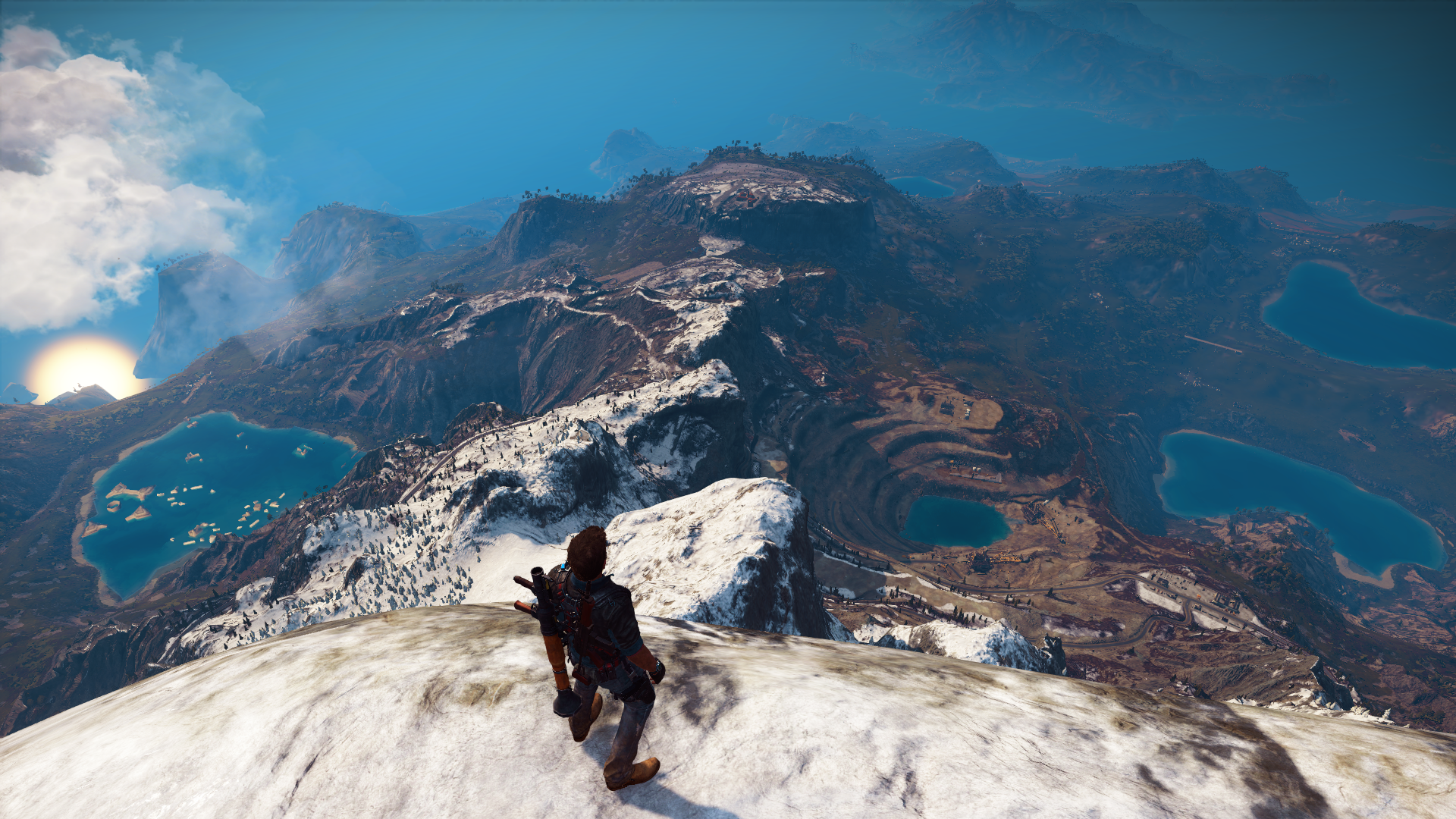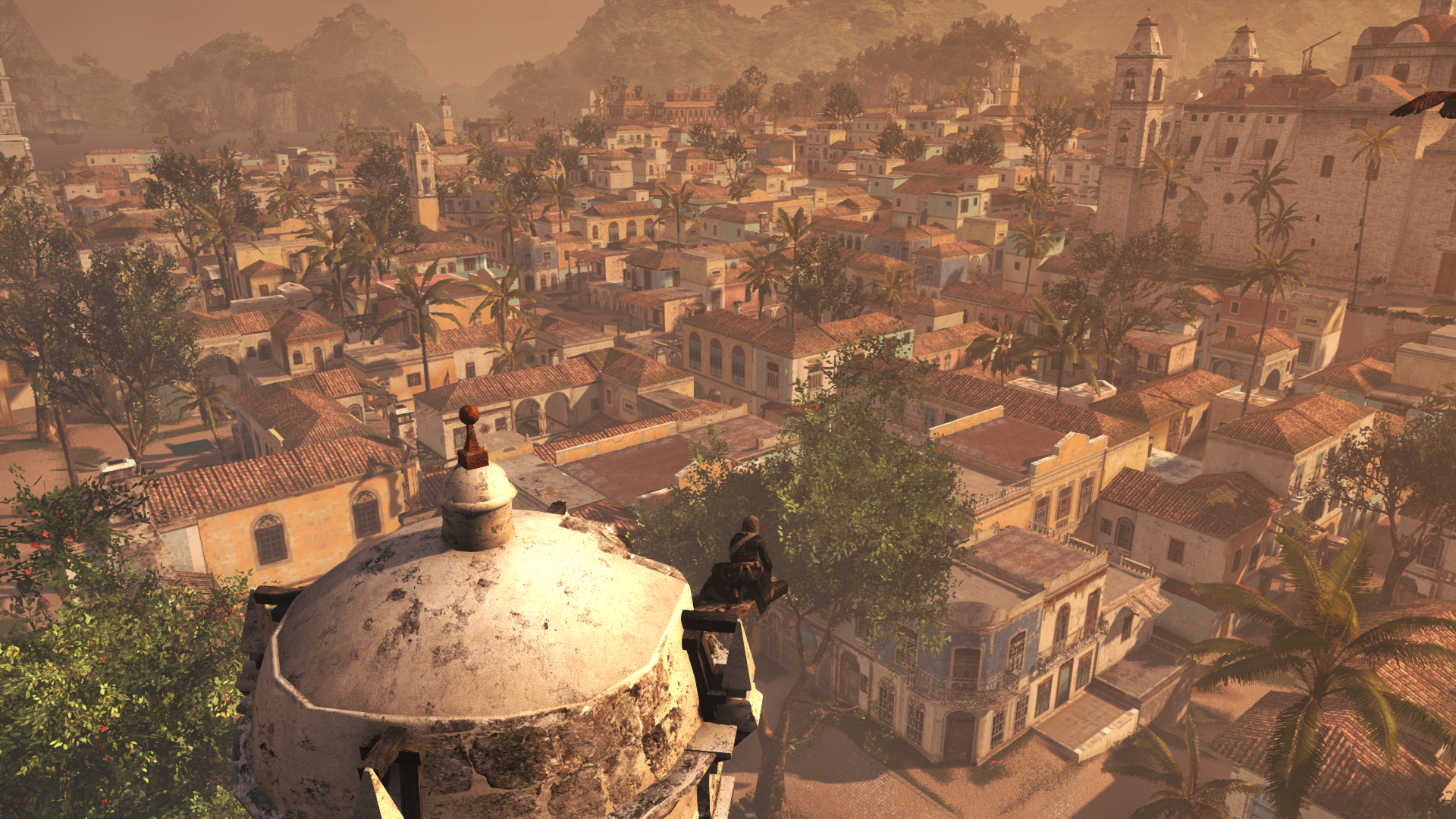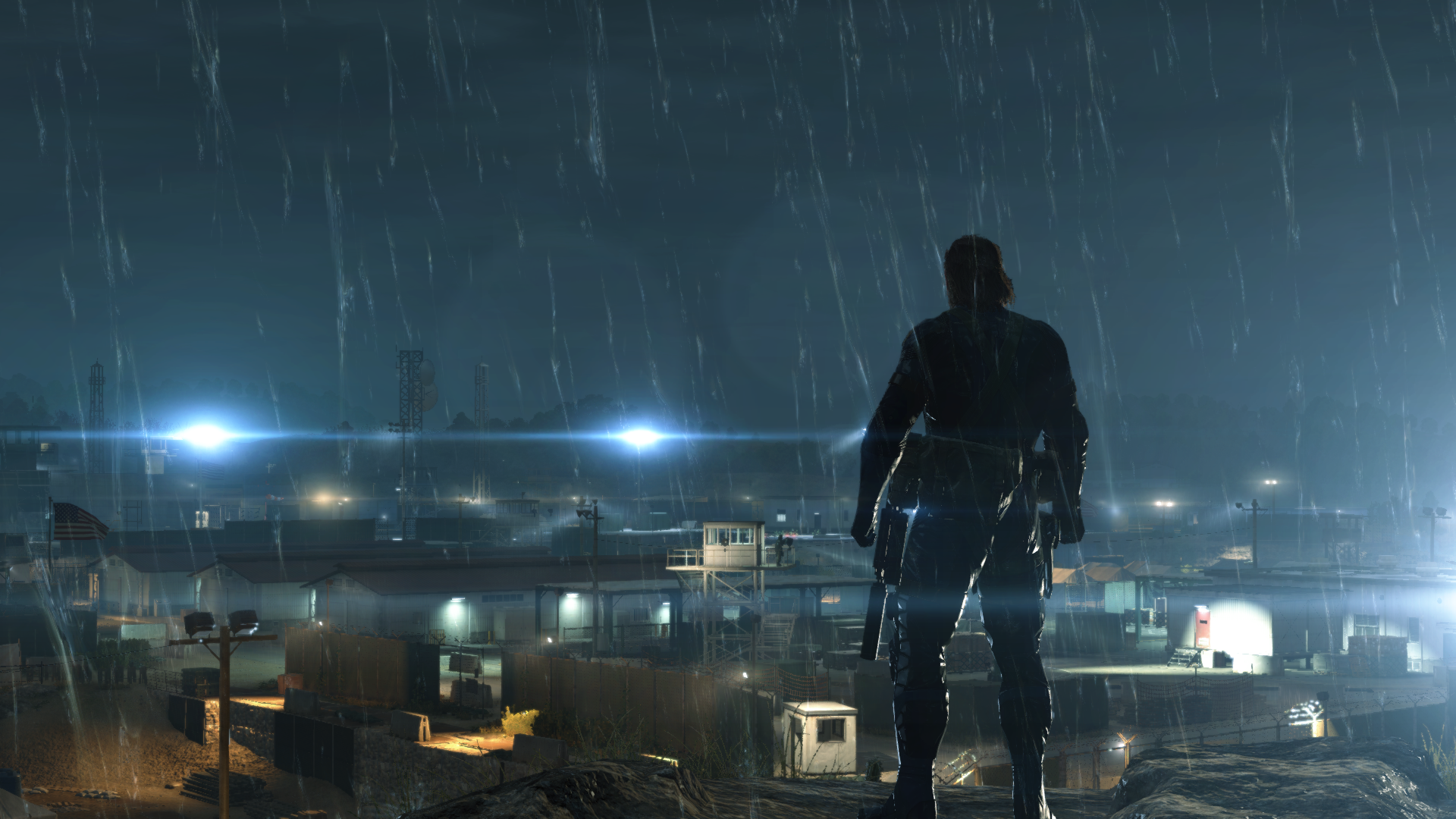Size isn't everything in open-world games

Once upon a time, I might have loved Just Cause 3’s Medici. It’s a massive, sprawling world that stretches as far as the virtual eye can see. But that’s really all it has to offer. There are miles of mountains, fields, and forests, but very little of it is actually interesting. It’s not like, say, a Bethesda game where you can pick a direction, walk, and stumble into a weird quest or story. Wherever you go in Medici there’s either an empty expanse of nothing or an enemy base that needs exploding.
Size doesn’t matter. Big worlds filled with miles of procedurally-generated countryside are meaningless. They might look impressive from the peak of a mountain, but they don’t engage the player in any way. That’s why, these days, it’s smaller, more detailed open-worlds that are the most effective. By focusing on a relatively compact space, developers can be more precise with their world-building. The result is a more believable, hand-crafted world that doesn’t feel big for the sake of it.
Grand Theft Auto 5 is a good example of this. Rockstar’s world is large, sure, but not as big as some. It only takes a few minutes to fly from one end to the other in a helicopter. But what it lacks in square miles it makes up for in detail. Los Santos and Blaine County are masterpieces of atmosphere and world-building. Everywhere you look there’s a crazy amount of rich, granular detail—from billboards, wildlife, street signs, and graffiti to the way the AI citizens around you interact with each other.

The other day while driving randomly around the map I encountered some cops and a biker gang have an unscripted firefight on a freeway. Later I drove my car into a canal (accidentally) and a random passer by got out his mobile phone and started taking photos—exactly as someone would in real life. These are the things that make an open-world feel alive, and little moments like this are often more effective at selling the illusion of an imaginary place than the biggest, most sweeping vista.
A long draw distance and a glowing sunset used to be all it took to make you stare slack-jawed in wonder. Remember the first time you gazed across Cyrodiil in Oblivion as the sun dipped below the horizon? But graphics technology has advanced to the point where only the most dazzling of skyboxes pack a punch. Increasingly, it’s the micro-details that stop us in our tracks: rain trickling down Batman’s cowl in Arkham Knight or neon signs reflected in puddles during a storm in Grand Theft Auto 5.
Big worlds aren’t inherently bad. It depends on the game. The Arma series is renowned for its huge play spaces, and in this case I think they’re justified. Arma is an incredibly deep military sandbox, and the varied terrain lets the developers—and players making use of its powerful built-in editor—create any kind of mission or set-piece they can dream of. The Aegean island of Altis might be as sparse as Medici, but the difference is, the game that’s set there has genuine depth. Just Cause 3 has acres of space, but nothing interesting to fill it with besides mindless destruction.

Metal Gear Solid 5 is a game that certainly isn't lacking in depth, but looking back, Camp Omega—the much smaller setting of prologue Ground Zeroes—has stuck with me more than Afghanistan or Africa. It's a wonderfully designed space, in which I spent almost 30 hours experimenting with those fun, rich stealth systems. Every inch of the camp and military base feels carefully crafted. A similar amount of care and attention clearly went into the main game's locations too, but the increased size and stretches of empty landscape dilute the brilliance of the level design.
Keep up to date with the most important stories and the best deals, as picked by the PC Gamer team.
And I love Elite: Dangerous, but I sometimes feel like having hundreds of billions of stars to explore might be a tad unnecessary. I like the idea of taking my Asp into the deepest, darkest reaches of the Milky Way, but I know all I’ll find out there are more planets. I mean, they’ll probably be really pretty planets—and there are some awe-inspiring sights out there, including trinary star systems—but I wonder if a smaller, more hand-crafted section of the galaxy would be a more compelling alternative.
A game as absurd as Just Cause 3, with its gravity-defying wingsuit and plane-surfing, does need a large play space. But I honestly think Medici could be half the size and still feel big. Then, instead of spreading their work thin, the artists could focus more on the little details, making it a more interesting, rewarding place to explore. Of course, making a world as big as Just Cause 3’s and filling every inch with hand-sculpted, hand-placed detail would be an enormous task, and cost millions—so maybe they shouldn’t try. Instead, think smaller. You can increase the square miles of your world all you want, but it won’t matter if it feels empty and lifeless.
If it’s set in space, Andy will probably write about it. He loves sci-fi, adventure games, taking screenshots, Twin Peaks, weird sims, Alien: Isolation, and anything with a good story.


